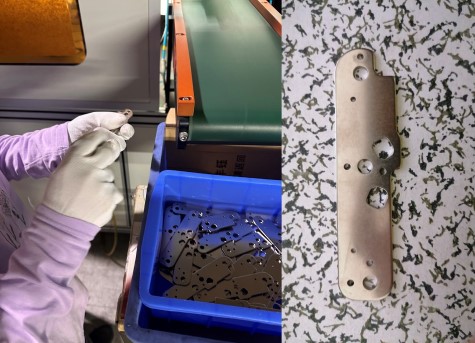
Metal stamping is a versatile and indispensable process in the manufacturing industry. It offers a cost-effective method for producing intricate components, making it a critical technology in various applications. In this article, we will explore the world of metal stamping in the context of motor core manufacturing. We will discuss the importance of motor cores, the materials used, the metal stamping process, quality control measures, and the advantages that metal stamping brings to motor core production.
The Significance of Motor Cores in Electrical Devices
Motor cores are the heart of many electrical devices, including electric motors and transformers. They are responsible for converting electrical energy into mechanical energy and vice versa. Motor cores consist of laminated sheets that are stamped, stacked, and wound with copper or aluminum wire to create efficient electromagnetic circuits. These components are fundamental to the operation of countless appliances and machinery, from household fans to industrial motors.
The Role of Motor Cores in Electric Motors
Electric motors are ubiquitous in our daily lives, powering a wide range of devices, from household appliances to industrial machinery. Motor cores are a critical component of electric motors. They create a magnetic field when electricity flows through them, which interacts with the rotor to produce mechanical motion. Without efficient motor cores, electric motors would be less effective, consuming more energy and generating excess heat.
Materials Used in Motor Core Manufacturing
The materials used in motor core manufacturing are carefully selected to optimize performance. The most common materials include:
- Silicon Steel: Silicon steel sheets are a popular choice due to their high magnetic permeability and low core loss. These sheets are coated to reduce eddy current losses, making them ideal for electric motor cores.
- Amorphous Metal: Amorphous metal alloys offer low core loss and are highly efficient, particularly in high-frequency applications.
- Powder Cores: Iron powder cores are used in applications that require high inductance and are designed to minimize magnetic losses.
The Metal Stamping Process for Motor Core Manufacturing
The process of creating motor cores through metal stamping is precise and well-defined. It starts with the design and fabrication of stamping dies, which are customized to create the required core shapes and dimensions. Thin sheets of the chosen material are then fed into a stamping press, where they undergo a series of cutting, shaping, and stacking operations. These operations are precisely controlled to ensure the sheets are aligned correctly, and the resulting motor cores meet the desired specifications.
Quality Control Measures in Motor Core Manufacturing
Maintaining high-quality standards is paramount in motor core manufacturing. Stringent quality control measures are implemented at various stages of production, including die inspection, dimensional checks, material testing, and visual inspections. These measures ensure that the motor cores meet the specified standards for efficiency and performance.
Advantages of Metal Stamping in Motor Core Manufacturing
Metal stamping provides several key advantages in the manufacturing of motor cores:
- Precision and Consistency: Metal stamping enables the production of motor cores with tight tolerances and consistent quality, ensuring optimal performance and efficiency.
- High-Volume Production: The process is highly suitable for high-volume production, making it cost-effective for manufacturers who need to meet large-scale demand.
- Customization: Stamping dies can be customized to create motor cores with specific shapes and dimensions, allowing for flexibility in design and application.
- Material Variety: Metal stamping accommodates a wide range of materials, allowing manufacturers to choose the best material for the application's specific requirements.
Conclusion
Metal stamping is a vital process in the production of motor cores, ensuring precision, efficiency, and cost-effectiveness. Motor cores, as essential components in electrical devices, benefit from the advantages of metal stamping, which enables the creation of high-quality cores that contribute to the performance and energy efficiency of electric motors and transformers. Manufacturers in the electrical industry can harness the power of metal stamping to meet the growing demands of a technologically driven world.

Metal stamping is essential for manufacturing pressure stabilizing gaskets, providing precise shaping, high-volume production, and quality control measures.

Metal stamping is crucial for producing stable, precisely positioned brackets in car audio systems. It offers cost-effective, high-quality manufacturing and adapts to advancements, including new materials, automation, and sustainability. Contact us for your precision metal stamping needs.

Learn what is copper components continuous metal stamping manufacturing, and discover its benefits, including high efficiency, cost-effectiveness, and high precision.
